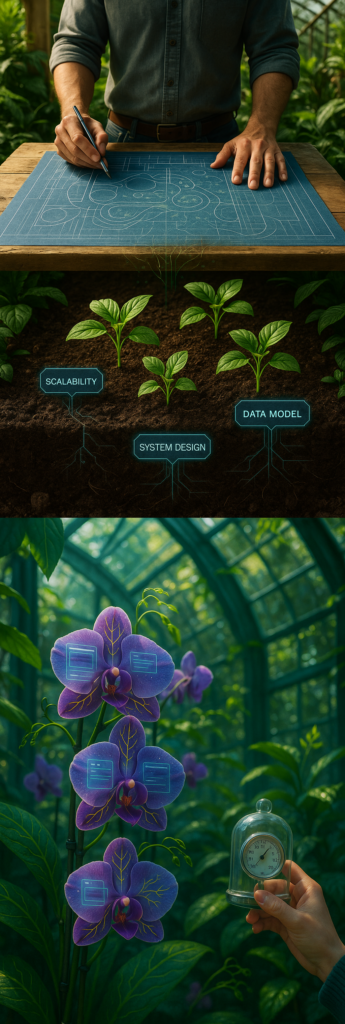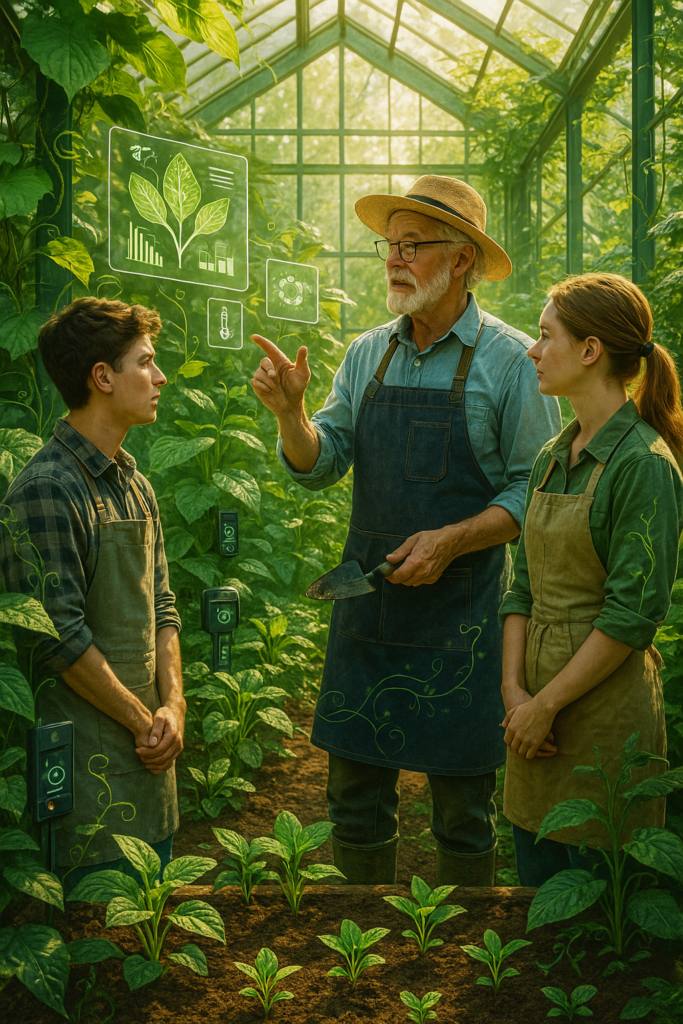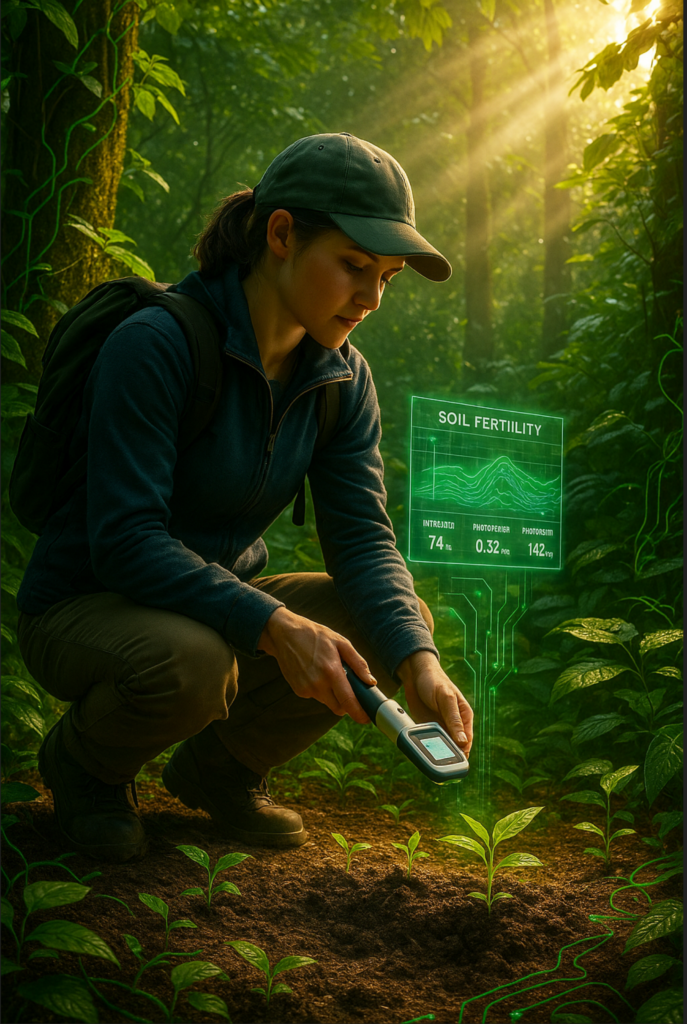Finding the Fertile Soil in Technology's Garden
In our rush to predict which careers will wither in the AI revolution, we’ve overlooked the new growth opportunities emerging in unexpected places.
Every time a major AI advancement hits the headlines, a new wave of anxiety washes over entire professional communities. Graphic designers worry about image generation capabilities. Programmers question their future when AI writes code. Content creators wonder if their skills will soon be obsolete.
The pattern is familiar: new AI capability emerges, panic spreads across an industry, doom-filled predictions proliferate.
But what if we’re asking the wrong question entirely?
Finding the Fertile Soil
Think of AI advancement not as a tide that covers everything in its path, but as a technological garden with varying soil conditions. Just as certain plants thrive in specific environments, human talent flourishes in areas where AI struggles to take root.
In this evolving landscape, the most successful professionals aren’t necessarily those in traditionally “safe” careers, but those who can identify the fertile soil where human capabilities thrive alongside AI-enhanced tools.
Industry experts who work directly with AI implementation increasingly note a fascinating pattern: as AI capabilities grow robust in certain areas—like a well-tended section of garden—other areas remain surprisingly difficult to cultivate despite significant investment and attention. These patches of “resistant soil” aren’t just technological shortcomings, they’re natural habitats for human expertise to flourish.
Consider the field of design. When AI image generation first demonstrated impressive capabilities, many designers feared obsolescence. But a more nuanced reality has emerged. Organizations quickly discovered that AI excels at generating visual concepts but struggles with implementation constraints like responsive design requirements, accessibility standards, and brand consistency across touchpoints.
This pattern has created new fertile ground: professionals who bridge the gap between AI-generated creative concepts and functional, professional implementation—people who understand both the possibilities of AI and its practical limitations. Many designers report they’re busier than ever in this evolving landscape.


Where Human Talent Flourishes
Let’s explore some of the most fertile soil where human capabilities continue to thrive despite—and sometimes because of—AI advancements:
Complex Interaction Design: The Delicate Orchids
Just as delicate orchids require specific growing conditions that can’t be easily replicated, complex interaction design demands a nuanced understanding of human behavior that AI hasn’t mastered.
AI excels at generating simple interfaces—what industry observers describe as “apps with a single button.” But it struggles with complex interaction systems where multiple elements need to work together coherently.
Professionals transitioning from standard UI design to complex systems design are finding sustainable advantages. AI can generate visually appealing dashboards, but it can’t effectively think through the intricate workflow of a healthcare provider moving between patient records, test results, billing, and scheduling in a coherent way. That requires a deep understanding of human behavior in complex environments that AI simply hasn’t cultivated yet.
Technical Solution Architecture: The Patient Gardeners
Like master gardeners who understand which plants will thrive in specific conditions over time, solution architects provide invaluable guidance about which technologies will support sustainable growth.
While AI coding tools have democratized basic development, there’s no equivalent for sophisticated solution architecture. The market increasingly values professionals who can translate business ideas into viable technical architectures.
A growing consultancy niche has emerged: helping entrepreneurs move beyond AI-generated landing pages to fully functional products. Companies need experts who understand business goals and can design systems that scale appropriately. AI can write code, but it lacks the judgment to determine which technologies make sense for specific business contexts and long-term scalability requirements.
Competitive Assessment & Distribution: The Ecosystem Navigators
Just as certain experts can read subtle signs in nature that indicate where specific plants will thrive, experienced business strategists can interpret market conditions in ways AI cannot.
AI struggles with the “gut-level intuition” crucial for sales, go-to-market strategies, and distribution planning.
Business strategists with deep industry experience are finding their skills more valued, not less, in the AI era. While AI excels at analyzing market data and identifying patterns, it cannot read between the lines on competitor positioning or sense when a market is ripe for disruption. Organizations increasingly separate their use of AI for research and outreach from the strategic guidance that determines where to focus those efforts.
Cross-Domain Innovation: The Cross-Pollinators
Just as nature’s most remarkable adaptations often emerge when different species interact in unexpected ways, human innovation thrives when knowledge from disparate fields cross-pollinates.
Like a chef creating fusion cuisine by drawing inspiration from travel experiences, humans naturally connect ideas across disparate fields in ways AI can’t replicate.
Consider the growing field of biomimicry in sustainable architecture. Innovative firms operate at the intersection of biology, materials science, and architectural design—making connections that wouldn’t emerge from analyzing each field separately. AI operates within the boundaries of established knowledge domains, while breakthrough innovation often occurs when concepts from unrelated fields collide in unexpected ways. These interdisciplinary insights represent a distinctly human creative advantage.
Empathetic Problem Reframing: The Root-Cause Explorers
Like expert arborists who can tell that a tree’s wilting leaves actually indicate a root system problem, humans excel at looking beyond symptoms to identify core issues.
In contrast AI excels at solving defined problems but struggles to reframe challenges in more useful ways.
This limitation has expanded opportunities for professionals who specialize in problem discovery rather than just problem-solving. The most successful customer experience consultants today don’t just optimize existing approaches—they help organizations recognize when they’re solving the wrong problem entirely. A company might think they have a marketing challenge when they’re actually facing a product design issue or service delivery problem. This fundamental reframing ability, which requires deep empathy and systems thinking, remains firmly in the human domain.
From SaaS to AI: From Monoculture to Diverse Ecosystem
These opportunities aren’t just relevant for individual careers—they’re reshaping entire business models. As we explored in our recent article “Beyond Vanilla Ice Cream: How AI is Reshaping SaaS Revenue Models,” the standardized, predictable subscription models beloved by investors are evolving into more nuanced, customized approaches.
Just as modern agriculture is shifting from monoculture (growing a single crop) to more diverse, sustainable polyculture systems, the SaaS world is transforming from mass production to mass personalization, from seat-based pricing to outcome-based models. This evolution creates even more demand for human judgment, creativity, and relationship skills to complement AI capabilities.
Financial software providers offer a telling example of this transition. Where once they sold standardized software with predictable subscription revenue (the monoculture approach), many now provide AI-enhanced solutions with human advisory services (a more diverse ecosystem). The technology handles data processing and standard reporting, while human teams focus on strategic guidance and customization. While this model creates less predictable revenue patterns, companies report significantly higher customer retention and long-term value—much like how diverse agricultural systems may be more complex to manage but ultimately produce more robust, resilient results.
The Upskilling Opportunity: Becoming Master Gardeners
The key insight here isn’t that certain jobs are “safe” while others will disappear. Instead, roles across virtually all industries are evolving to emphasize distinctly human capabilities that complement rather than compete with AI.
This creates a tremendous opportunity for strategic upskilling. Rather than trying to outperform AI at tasks it does well (like information processing or pattern recognition), successful professionals are developing skills where humans naturally excel:
- Contextual judgment in ambiguous situations
- Creative problem reframing
- Building trust through authentic relationships
- Cross-domain innovation
- Navigating cultural and emotional nuances
- Articulating meaningful purpose and vision

Looking Forward: Cultivating Tomorrow’s Careers
The most exciting opportunities exist at the intersection of human strengths and technological advancement. Some emerging roles to watch:
- Implementation Strategists who bridge the gap between AI-generated ideas and practical execution
- Ethics Architects who design governance systems for AI deployment
- Human-AI Collaboration Coaches who help teams leverage AI effectively while focusing human effort where it adds most value
- Experience Orchestrators who create cohesive customer journeys across human and AI touchpoints
- Solution Ecosystem Designers who architect complex systems that integrate multiple technologies and human workflows

Conclusion: Seeking Fertile Ground
The next time you see headlines about AI disrupting another industry or replacing another job function, remember to look for the fertile soil—areas where human capabilities thrive alongside technological advancement.
As AI handles more routine cognitive tasks, we have an unprecedented opportunity to focus on work that leverages our distinctly human capabilities: empathy, creativity, ethical judgment, and intuitive understanding of other people.
The future doesn’t belong to AI alone, nor to humans working in isolation from technology. Like a well-designed garden that balances wild and cultivated elements, the most productive future combines technological efficiency with human insight.
So when the next big AI breakthrough unveils and potentially blows your world up, pause before panicking. Look for the patches of fertile soil in that technological landscape, and you might just find where your talents can truly flourish.
We see success belonging to those who can move quickly, think deeply, and adapt without losing sight of both what humans can bring to the table WITH AI. The next era is not about resisting change, it is about cultivating it with purpose
About The Kernel
Headquartered in Charleston, South Carolina, The Kernel is a unique advisory firm serving emerging technologies, global enterprises, and capital providers. Founded by a team of veteran technologists and investment management professionals, The Kernel is united by a mission to drive growth through innovation. With a proven model of identifying, validating, deploying, and investing in emerging technologies, The Kernel consistently delivers successful outcomes for its enterprise clients and capital partners. Learn more at https://thekernel.io.

